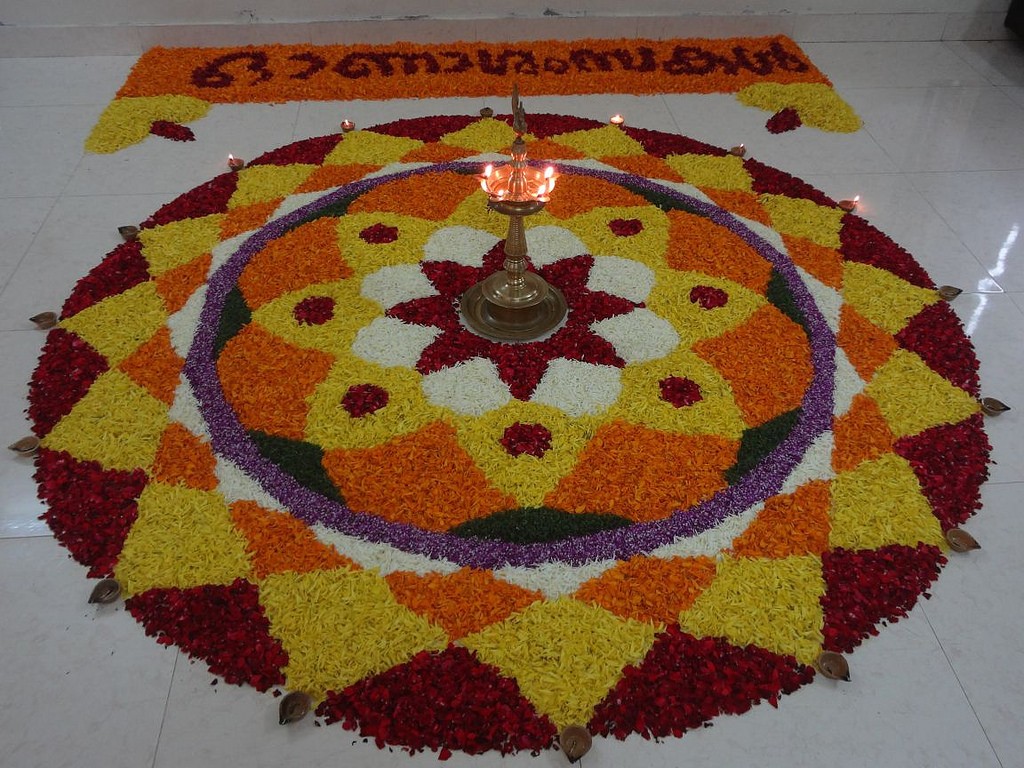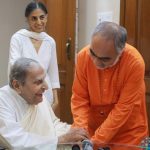“Maveli Naadu vanidum Kalam, Manushyar ellarum onnu pole”, a song handed down over centuries from the golden era of Kerala when King Mahabali ruled Kerala. The song conveys that during the rule of King Mahabali, all men lived together as one in absolute harmony. Onam, a festival celebrated with great joy and merriment, marks the yearly return of the great ruler King Mahabali who sacrificed himself for the love of his subjects and kingdom is a festival of communal harmony.
Onam is the national festival of the Malayalee people living in the State of Kerala in South India. It was traditionally celebrated as the harvest festival that comes in the month of Chingam of the Malayalam calendar.
Must Read : Onam : How Kerala Celebrates the 10-day Long Harvest festival
Although the myth behind the festival originates from the Hindu tradition, it is celebrated as a secular event by people of all religious beliefs. Government and non-government organizations take this as an opportunity to foster communal harmony, peace and ecological sensitivity among the people. The most significant fact of this festival is that it is celebrated in commemoration of a glorious past when there prevailed an ideal state of prosperity and peace.
 The popular myth associated with Onam has its diverse socio-cultural variations, analysis and understanding. The myth unfolds as follows: Lord Vishnu comes in the Avatar (Divine Incarnation) of Vamana, disguised as a Brahmin boy, to the audience of the Asura (demon) king Mahabali. He is accorded the warmest of welcomes and asked to seek any gift he wishes. Vamana seeks ‘three feet of land’. His wish being granted, he assumes the form of Vishnu’s ‘Viswa roopa darsana’ (Apparition as a Universal Form) and places one foot on ‘Swarga lokam’ (heaven), one on ‘Bhoo lokam’ (earth) and then asks Mahabali where to place the third! With Mahabali’s head alone remaining unoccupied, he places his foot there and pushes him down to ‘Patala lokam’ (under world) thus killing him. Incidentally, legend has it that Mahabali recognising that he has been tricked asks Vishnu to let him return to his people once a year for a day. Vishnu concedes and that day is celebrated as ‘Onam’ by the Kerala people! It is interesting to note that the same legend has a different and opposite interpretation in North India. Mahabali is depicted as the king of ‘Asuras’ (demons) whose killing became necessary for the very survival of humans.
The popular myth associated with Onam has its diverse socio-cultural variations, analysis and understanding. The myth unfolds as follows: Lord Vishnu comes in the Avatar (Divine Incarnation) of Vamana, disguised as a Brahmin boy, to the audience of the Asura (demon) king Mahabali. He is accorded the warmest of welcomes and asked to seek any gift he wishes. Vamana seeks ‘three feet of land’. His wish being granted, he assumes the form of Vishnu’s ‘Viswa roopa darsana’ (Apparition as a Universal Form) and places one foot on ‘Swarga lokam’ (heaven), one on ‘Bhoo lokam’ (earth) and then asks Mahabali where to place the third! With Mahabali’s head alone remaining unoccupied, he places his foot there and pushes him down to ‘Patala lokam’ (under world) thus killing him. Incidentally, legend has it that Mahabali recognising that he has been tricked asks Vishnu to let him return to his people once a year for a day. Vishnu concedes and that day is celebrated as ‘Onam’ by the Kerala people! It is interesting to note that the same legend has a different and opposite interpretation in North India. Mahabali is depicted as the king of ‘Asuras’ (demons) whose killing became necessary for the very survival of humans.
Therefore, while one section of Indians in the north celebrates the death of Mahabali, in Kerala his return is celebrated!
Must Read : Onam : Legends associated with the Festival
A marxist interpretation of the myth approaches it from a perspective of class/caste contradiction. Here the myth is observed to be a product of the age old conflict between the fair-skinned and dark-skinned people of the area and the hegemony of the strata which is politically, economically and culturally superior is being legitimized and perpetuated as part of a common culture. It is to be noted that the upper caste was intelligent enough to permit a day of permissiveness by allowing the dark-skinned king to come back from the underworld so that he could visit his people once in a year.
This psychological maneuvering, they thought, would effectively prevent the vengeance and potential upsurge by the down-trodden sections of the society against the ruling classes. This kind of culture is mediated and transmitted through a complex web of social relations and the consequent social structure. The family, the community, education system, caste, religion, its places of worship like temples, churches, mosques, gurdwaras etc are the institutions that constantly feed the fodder to shape values and opinions bolstering ruling class hegemony of ‘ideas’. In the process, they create the ‘myth’ of a ‘common culture’. This ‘common culture’ is nothing but the selective transmission of class dominated values through the various institutions referred to above.
The main feature of the festival of Onam is a vociferous welcome to king Mahabali in millions of households in Kerala. Onam is symbolized by icons that are literally earthy and ecologically friendly. Made of clay or mud, these conical objects are adorned with flowers and worshipped as Thrikkakara Appan (deity), symbolizing the Vamana Avatar of Lord Vishnu, which is central to the Onam legend. The Onam festival commences with Atham Day and lasts for a fortnight culminating on the Uthirittathi. The most important celebrations are on four days- Uthradam, Thiruvonam, Avittom and Chathayam. There will be fun and cheer among all people especially among the younger folk during the entire season. The climax of the festival is on Thiruvonam Day. On that day every one takes bath and offers worship in the temples. Then the gayest apparel is put on. Then there is the grand feast which is called ‘Onam Sadhya’. It is a grand feast indeed, even in the poor man’s hut. Rice is the main item and along with it several sorts of curries or vegetable preparations including various kinds of puddings. After the feasting, there will be sports and games, in which every one participates according to his or her liking. People physically and mentally participate in the festival by singing and through various games.
A heart-warming aspect of Onam is also representative of Kerala’s unique status as a place that symbolises Indian communal and social harmony. All sections of people, cutting across class, caste and religious barriers, celebrate the festival. Even though it started out as a Hindu festival, it’s now more of a cultural one celebrated with equal gusto by Kerala’s sizeable Christian and Muslim populations, with Onam celebrations even held in some churches starting with the lighting of the ‘nilavilakku’ or traditional lamp.
The mutual respect and shared traditions of Keralites ensure that no one is missing out on the fabulous food, flowers, dancing and games. Happy Onam!
————–









